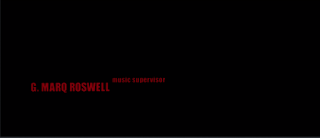Representations
The way in which people, events and ideas are presented to the audience.
For example, the media takes something that is already there and represents it to us in the way they choose.
These representations are created by the producers (anyone who makes a media text) of media texts.
What they choose to present to us is controlled by gatekeepers.
Gatekeepers
A media 'gatekeeper' is any person involved in a media production with the power to make a decision about something the audience are allowed to read, hear or see - and, of course, not get to see; for instance, a newspaper editor has the final say on what goes into his or her newspaper, where it goes within the pages, next to what other piece, with which pictures, strap-lines and headlines, etc.
Moguls
But in the example of the newspaper editor's decision, this will not be made freely: it will have been affected by technical issues, by the kind of person who owns the newspaper, for example (i.e. the so-called media moguls, such as Rupert Murdoch), and by many things.
Media Consumers, that is you and me, the audience for media texts, are mostly unaware of the 'gatekeeping' decisions; indeed, the gatekeeper's job is to ensure his or her decisions and actions are 'transparent' or 'invisible' to the audience: But our perceptions of the news - and the version of the world it represents for us - are often strongly influenced by the gatekeeper's decisions.
Who, What, Why, Where
When you're analysing representation, think about the following questions:
- Who or what is being represented? Who is the preferred audience for this representation?
- What are they doing? Is their activity presented as typical, or atypical? Are they conforming to genre expectations or other conventions?
- Why are they present? What purpose do they serve? What are they communicating by their presence? What's the preferred reading?
- Where are they? How are they framed? Are they represented as natural or artificial? What surrounds them? What is in the foreground and what is in the background?
The Male Gaze (Laura Mulvey)
The cinema apparatus of Hollywood cinema puts the audience in a masculine subject position with the woman on the screen seen as an object of desire Film and cinematography are structures upon ideas.
Protagonists tended to be men. Mulvey suggests two distinct modes of male gaze - "voyeuristic (women as whores) and fetishist - women as unreachable Madonna's". (Also narcissistic - women watching film see themselves reflected on the screen).
How we treat people (Richard Dyer)
Dyer argues that how we are seen determines how we are treated and how we treat others people is based on how we see them. This comes from our understanding of representation.
He believes that stereotypes come down to power. Those who have power stereotypes those who don't.
Myths (Roland Barthes)
Barthes theory looks quite closely at the idea of mythology, usually in regards to people and places. He suggested that the media often gives us mythic representations or a fairy-tale-style portrayal or a particular place person.
Subculture (Dick Hebdidge/Ken Gelder)
Hebdidge said that a subculture is a group of like minded individuals who feel neglected by societal standards and who develop a sense of identity which differs to the dominant on to which they belong.
Ken Gelder lists 6 ways in which a subculture can be recognised:
- Often have negative relationship to work
- Negative or ambivalent relationship to class
- Through their associations with territory (The street, The hood, The club) rather than property.
- Through their stylistic ties to excess
- Through their movement out of home into non-domestic forms of belonging (social groups as opposed to family)
- Through their refusal to engage with they might see as 'banalities' of life.








































